Why cleaning your pickleball paddle matters
Cleaning your paddle is essential for three primary factors: paddle hygiene, performance enhancement, and extending its lifespan. In the following sections, we will delve deeper into these aspects.
The hygiene factor
Imagine holding a paddle that has accumulated layers of sweat, dirt, and bacteria after countless matches. This build-up can be more than just unsightly; it poses health risks as bacteria thrive in warm, moist environments, potentially leading to skin irritations or infections. Just as we wouldn't eat off a dirty plate, wielding a grimy paddle can compromise our health and the integrity of the game.
To combat this, regular cleaning is crucial. A simple wash can eliminate harmful microbes that may lurk on the surface, ensuring a healthier playing experience. Research indicates that pollutants can contribute to various conditions, reinforcing the notion that we must prioritize cleanliness, not only for the sake of the paddle but also for our health.
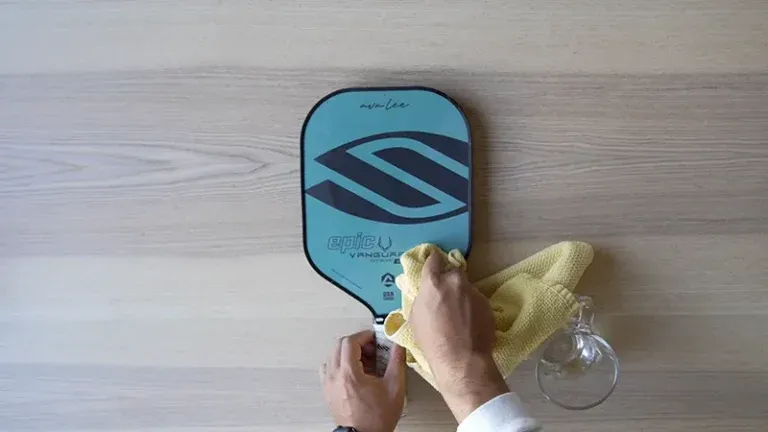
Performance enhancement
A clean paddle goes beyond hygiene it significantly impacts your game. The surface of a paddle is designed for optimal grip and spin; however, dirt particles can interfere with its performance. Think of it like a car engine: A clean engine runs smoothly, while a dirty one struggles and may even fail. Regular cleaning maximizes the grip and spin of your paddle, enabling better control and shot accuracy.
Various professional players have emphasized how dirt build-up affects game performance. In one study on equipment maintenance, researchers noted that 78% of players felt their performance improved after cleaning their racquets and paddles regularly. This reveals that regular cleaning not only enhances play but also boosts players' confidence as they step onto the court with well-maintained gear.
Extending paddle lifespan
Moreover, neglecting to clean your paddle can lead to premature wear and tear. Dust and grime can erode materials over time, weakening the paddle's structural integrity. Just as a neglected garden becomes overrun with weeds, so too can a dirty paddle deteriorate much faster than one cared for.
To prolong the life of your paddle, make cleaning a regular part of your maintenance routine. Treat your paddle as you would a cherished possession; when properly cared for, it will serve you well for many games to come. Research from the USA Pickleball Association highlights that maintaining equipment extends its lifespan and performance, giving you the best value for your investment.
Cleaning based on paddle material
Just as different instruments require unique care, various paddles call for specific cleaning techniques based on their materials. In this section, we’ll break down the best practices for cleaning composite, graphite, and raw carbon fiber paddles, ensuring that you utilize the most effective approach for your paddle's material.
Cleaning composite paddles
Composite paddles are popular due to their balanced mix of power and control, but they also require gentle care. Generally made from a combination of materials, these paddles benefit from a careful approach to cleaning. To clean your composite paddle, start by mixing a solution of mild soap with warm water, ensuring it’s not too soapy.
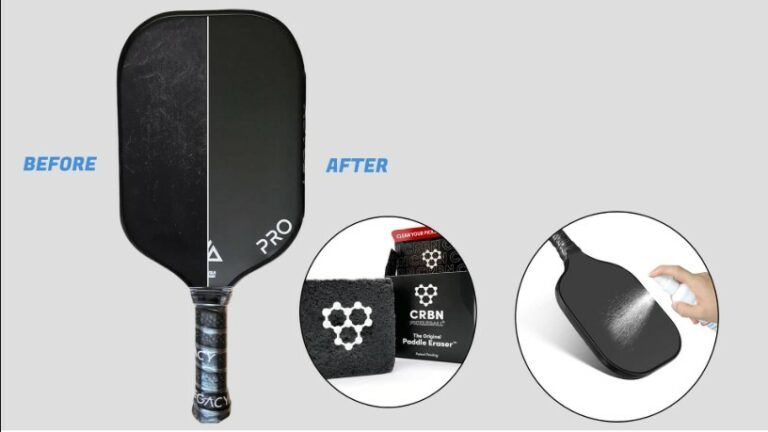
- Preparation: Use a damp microfiber cloth to wipe down the surface. Gently clean dirt and grime without soaking the paddle.
- Avoid harsh chemicals: Opt for natural cleaning solutions instead of abrasive or harsh household cleaners, as these can damage the paddle surface.
By following these steps, you can maintain the paddle’s integrity while ensuring it remains free of impurities.
Cleaning graphite paddles
Graphite paddles are favored for their light weight and durability. However, they also require specific attention during cleaning. As with composite paddles, the primary method involves using a mild soap mixed with warm water.
- Surface care: Gently wipe the paddle with a soft cloth, focusing on the face and edges where dirt tends to accumulate.
- Avoid abrasive tools: Just like in composite paddles, refrain from using any kind of scrubbing pads or brushes that may scratch the surface.
By incorporating these gentle techniques, your graphite paddle will continue to deliver top-notch performance.
Cleaning raw carbon fiber paddles
Raw carbon fiber paddles needs special attention due to their unique material properties, which can be sensitive to harsh elements. While they are incredibly durable, any damage can significantly affect performance. The cleaning process for raw carbon fiber requires a careful touch.

- Using a carbon fiber cleaning block: Instead of typical cloths, consider purchasing a specific cleaner designed for carbon fiber materials. This ensures you protect the paddle while effectively removing dirt.
- Cleaning frequency: Depending on your usage, it may be necessary to clean raw carbon fiber paddles more frequently compared to other materials.
By respecting the needs of the material, you can ensure your carbon fiber paddle remains in pristine condition while performing at its best on the court.
Step-by-step paddle cleaning guide
Once you've determined the best methods based on your paddle's material, it’s time to put the cleaning plan into action. Below is a step-by-step guide that outlines the most effective approach to achieve a clean and well-maintained paddle.
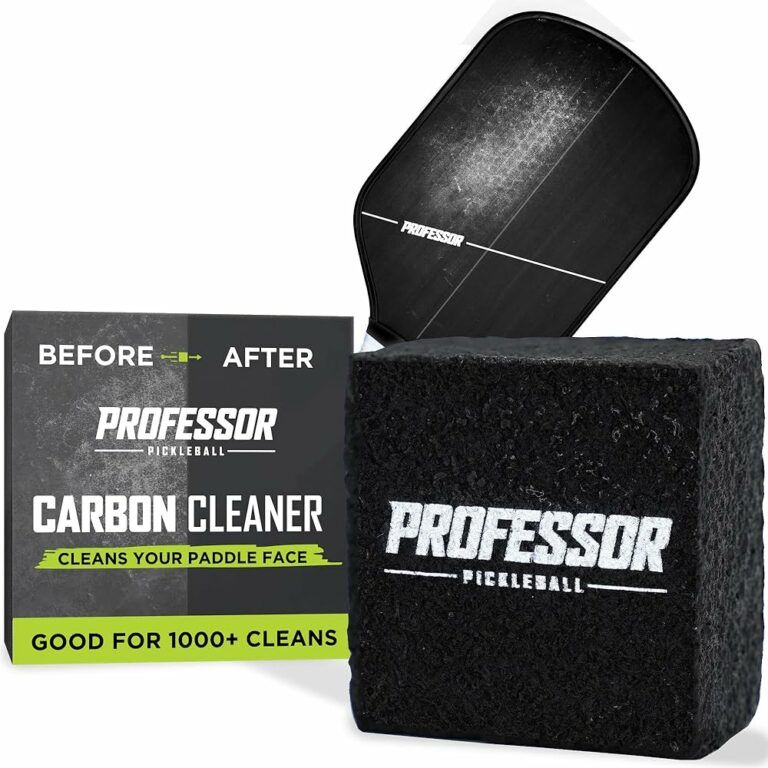
Cleaning the hitting surface
The hitting surface is arguably the most crucial part of the paddle, and cleaning it correctly will ensure peak performance.
- Gather materials: Use a paddle eraser or a damp microfiber cloth.
- Wipe the surface: Start by gently wiping the surface to catch any dirt or dust.
- Visual aids: If possible, refer to video tutorials that demonstrate these techniques visually, as seeing the process can significantly enhance understanding.
This straightforward technique can keep the face of your paddle in optimal condition for every game.
Cleaning the paddle grip
The grip is essential for maintaining control and comfort during play. A dirty grip can lead to slipping, negatively impacting performance.
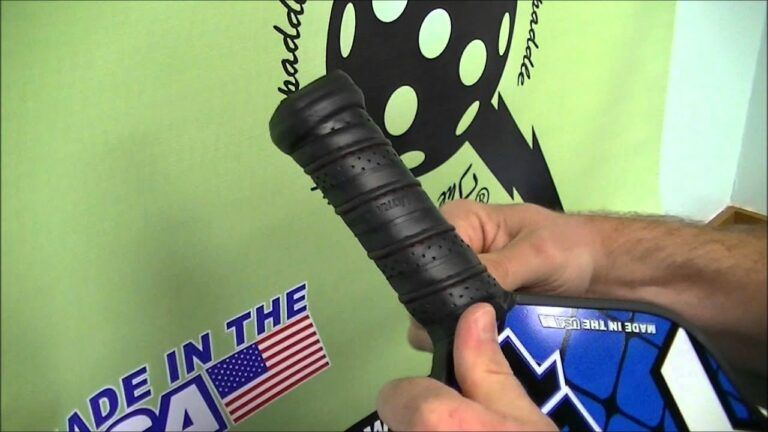
- Damp cloth method: Use a slightly damp cloth to wipe down the grip, ensuring it is not soaking wet.
- For stubborn dirt: If the grip is particularly dirty or sweaty, consider specialized grip cleaners or even replacing the grip altogether if it's too worn.
Providing proper care to the grip is just as vital as the paddle's face, ensuring you maintain excellent control during matches.
Cleaning the edge guard
Don't forget about the edge guard! It's crucial for protecting the edges of your paddle.
- Damp cloth or baby wipe: Use a damp cloth or a baby wipe to clean the edge guard, ensuring dirt and debris do not accumulate, which could eventually damage the paddle.
- Regular maintenance: Cleaning the edge guard should be part of your regular cleaning routine, as neglecting it can lead to unnecessary damage.
By including the edge guard in your cleaning practices, you're further safeguarding your equipment against wear and tear.
Maintaining your paddle grip
An often-overlooked aspect of paddle care is maintaining the grip, which has a direct influence on play. Here’s how to ensure your grip remains in top shape for optimal control.
Signs your grip needs replacing
A worn grip is a significant factor that affects performance. Recognizing the signs will allow you to replace the grip before it impacts your game.
- Slippery feel: If you find yourself struggling to maintain a solid hold, it’s time to evaluate your grip.
- Loss of tackiness: A lack of tackiness should prompt immediate action to avoid performance decline.
- Visible wear and tear: Inspect your grip regularly for any peeling or degradation.
By staying vigilant, you can ensure your paddle remains a reliable tool on the court.
Choosing the right grip
Selecting the correct grip can often optimize your game. You'll encounter different types of grips wrapped and unwrapped.
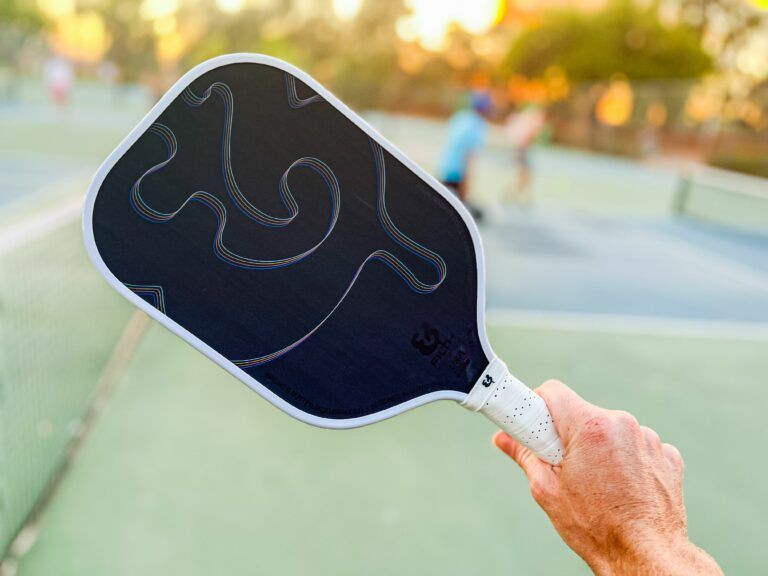
- Wrapped grips: Provide a more cushioned feel, beneficial for longer play sessions.
- Unwrapped grips: Offer a more direct connection to the paddle, which some players prefer for control.
By weighing the pros and cons, along with considerations for grip brands, you can make a more informed choice in selecting the ideal grip for your play style.
Replacing a pickleball paddle grip
When it becomes necessary to replace your paddle grip, follow this detailed guide for a successful switch.
- Removing the old grip: Carefully peel away the old grip tape, taking care not to damage the handle.
- Applying a new grip: Firmly press the new grip starting from the bottom and smoothing it as you go, ensuring an even application.
- Finish off: Cut excess tape and ensure it adheres properly.
Visual aids in the form of videos can greatly assist in this process, enhancing understanding for both novice and experienced players alike.
Using overgrips
Overgrips add another layer of comfort and hygiene. These provide numerous benefits, such as improved grip and customization.
- Application: They're typically easy to apply, wrapping around the existing grip to provide a fresh surface. Follow the same steps used for grip replacement.
- Hygienic advantage: Overgrips can be swapped out frequently, maintaining cleanliness and ensuring a better feel during games.
Incorporating overgrips into your regular maintenance routine enhances comfort, grip, and overall performance.
Protecting your paddle: edges and storage
Active care for your paddle doesn't stop at cleaning; proper storage and edge protection are necessary to prolong your paddle's life.
Protecting paddle edges
The edges of your paddle are prone to damage if not cared for properly.
- Edge guard tape: Utilizing edge guard tape is a proactive step to protect against chipping and other damage.
- Application: Ensure a tight fit around the edge without leaving gaps, which can compromise protection.
Different types of edge guard tape are available; knowing their pros and cons can aid in forming better protection.
Proper paddle storage
Understanding how to store your paddle can significantly affect its longevity. Extreme temperatures can do considerable harm to paddle materials, leading to costly replacements.
- Storing conditions: Keep paddles in a temperate environment, avoiding places with high humidity or direct sunlight.
- Use of covers: Investing in a protective cover can shield the paddle from moisture and physical damage during transportation or storage.
Developing good storage practices will help preserve your paddle's quality and prolong its usability.
Extending your paddle's life: beyond cleaning
While cleaning facilitates improved performance and longevity, it's imperative to care for your paddle beyond just cleanliness.
Understanding normal wear and tear
Even the best-maintained paddles will experience some degree of wear and tear over time. Understanding the norm can help you discern when maintenance is necessary.
- Common signs: Scratches, dings, and fading graphics may be indicators that your paddle is under duress.
- Repair vs. Replace: Assessing the damage and determining whether it warrants repair or replacement is essential for making sound investments.
Developing a sense of awareness for these indicators will aid in preserving your paddle's functionality.
Handling your paddle with care
Proper handling practices can prevent unnecessary damage. Just as carefully handling a fragile vase ensures it remains unbroken, avoiding hard impacts with your paddle can significantly extend its life.
- Avoid slamming: Place your paddle gently on surfaces instead of slamming it down, as this can lead to structural damage.
- Be cautious during transport: Ensuring that your paddle is packed securely when transporting will mitigate the chances of accidents.
Thoughtful handling goes a long way in preserving the integrity of your paddle.
Manufacturer warranties
Always be sure to check your paddle's manufacturer warranty to identify what's covered. Damage done outside of normal wear may still be eligible for coverage, so it can save you both time and money later on.
Knowing when to replace your paddle
When all else fails, recognizing the signs that indicate it’s time for a new paddle is critical.
- Significant damage: Cracks or severe deformities are red flags you cannot afford to overlook.
- Performance decline: A noticeable decrease in performance can signal wear that cleaning won’t resolve.
Being attuned to these signals empowers you to make informed decisions about when it’s time for a replacement rather than producing diminished returns.
Cleaning other pickleball gear
Your paddle isn't the only piece of equipment that deserves attention; maintaining other gear is equally important for performance and hygiene.
Cleaning pickleballs
Visibility and performance hinge on clean pickleballs.
- Cleaning method: Use a damp cloth or mild soap solution, making sure to dry them thoroughly.
- Routine checks: Regular cleaning ensures they don’t become a distracting element during play.
Keeping your pickleballs clean ensures they continue to perform effectively throughout your game.
Caring for pickleball bags
Pickleball bags can accumulate odors and moisture, so they require regular maintenance.
- Preventing odors: Regularly wipe down the interior with a damp cloth or disinfectant wipes.
- Storage tips: Store bags properly when not in use to minimize moisture accumulation, leading to unwanted mold or odors.
By integrating maintenance into your bag care routine, you can maintain a clean and fresh smell that adds to your overall game experience.
Cleaning and storing pickleball shoes
Clean shoes are integral not only for hygiene but also for maintaining traction on the court.
- Cleaning methods: Depending on the material, use suitable cleaning solutions to remove dirt and avoid damaging the fabric.
- Storage tips: Ensure shoes are stored in a cooler area to prevent damage and musty odors.
Taking care of your shoes can contribute significantly to your performance and safety on the court.
Advanced cleaning tips and tricks
As you become more adept at cleaning and maintaining your paddle, consider incorporating some advanced tips to tackle stubborn stains or rejuvenate grips.
Tackling stubborn stains
Stains can plague the appearance of your paddle, but solutions exist to effectively remove them.
- Baking soda paste: Create a paste with baking soda and water for tough stains. Apply carefully and gently scrub without damaging the surface.
- Rubbing alcohol: Verify safety with the paddle manufacturer before using, as this can be effective for certain materials.
These techniques can help restore the appearance of your paddle and enhance the enjoyment of using it.
Reviving a worn-out grip
Sometimes your grip may simply need revitalization rather than replacement.
- Grip enhancers: These can restore tackiness to a worn grip, extending its life.
- Sanding technique: Lightly sand the surface to remove built-up residue (check safety with the grip manufacturer first).
These methods can prolong the grip's usability without necessitating an immediate replacement.
DIY cleaning solutions
For those who prefer environmentally friendly options, you might want to create natural cleaning solutions using ingredients readily found at home.
- Vinegar and water solution: Mix these in equal parts for a gentle cleaner that’s safe for most paddle surfaces.
- Customizations: Feel free to experiment with ratios based on your paddle's specific cleaning needs.
Using DIY solutions can save you money while also considering your environmental impact.
Eco-friendly pickleball care
Embrace eco-friendly practices by using biodegradable cleaning products when possible.
- Proper disposal: Be diligent about disposing of cleaning materials responsibly to minimize harm to the environment.
- Choose wisely: Opt for products with minimal packaging to further reduce your ecological footprint.
As environmental concerns grow, adopting more sustainable practices in your paddle care can contribute positively.
Conclusion
Maintaining your pickleball paddle isn’t merely an act of cleanliness; it’s a holistic approach to enhancing your game, prolonging equipment life, and ensuring optimal performance. By combining regular cleaning with informed care strategies, you can nurture your paddle and keep it performing at its best, allowing you to enjoy countless exciting games. As you implement these practices, remember that a well-maintained paddle translates to better play and more enjoyment on the court. So gear up, get cleaning, and let the pickleball games begin!










